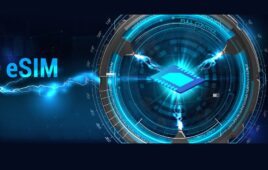The cloud concept involves sharing centralized resources over a network. In the mobile networking world, urban DAS deployments bring cloud-based network resources to subscribers and mobile operators. DAS distributes RF over long distances, typically over fiber. DAS then enables the concept of centralized radio resources or BTS hotel – co-located radio resources distributed to one or many radio heads. DAS implemented in a base station hotel connects all the services in the hotel (2G, 3G, 4G) with one or several radio heads, so its capacity can be delivered to different areas depending on the network need.
 Why is an urban DAS like a compute cloud? Because both offer multi-tenancy with a shared set of centralized resources. In the case of the DAS, the centralized resources are signal sources from a base station hotel. This architecture provides a lot of flexibility for mobile operators to optimize the capacity in their networks while serving subscribers when and where they need that capacity.
Why is an urban DAS like a compute cloud? Because both offer multi-tenancy with a shared set of centralized resources. In the case of the DAS, the centralized resources are signal sources from a base station hotel. This architecture provides a lot of flexibility for mobile operators to optimize the capacity in their networks while serving subscribers when and where they need that capacity.
For example, if commuters leave home in the morning and congregate at a railway station, the need for capacity shifts from the home neighborhood to the railway station. After users commute to work, the need for capacity shifts again to the office buildings where they work. The centralized base station hotel delivers its capacity, through the DAS, to the neighborhood, railway station, or enterprise as needed.
The ability to flexibly deliver capacity where it is needed from a centralized resource is the hallmark of an urban DAS, and one that makes it cloud-like in architecture. In addition, all of the base station hotel’s capacity is available to any DAS endpoint, so capacity flows just where it is needed throughout the day without the mobile operator having to deploy base stations that end up as idle capacity part of the time.
An urban DAS offers several advantages over a distributed radio or macro radio network model. For example, the cloud-like DAS can distribute any signal, so mobile operators can change protocols or frequency bands at the central location and have them radiate out to the user areas through the DAS. This makes it possible for mobile operators to provision new services to accommodate user needs without having to re-architect or upgrade the entire RAN (radio access network).
Another advantage to the urban DAS concept is that the cloud’s footprint can be expanded by simply adding another DAS to the base station hotel. In Las Vegas, for example, a base station hotel in the Mirage Hotel is connected to DAS that serve four other hotel properties along the Las Vegas Strip. Mobile operators could add more coverage for another hotel property or part of the outdoor strip area by adding another DAS. Today’s all-digital DAS products allow for signals to extend for miles from a base station hotel, giving mobile operators lots of flexibility in how and where to deploy DAS.
A further advantage is that the base station hotel can include base stations from multiple mobile operators, so they can share the DAS as a neutral host resource and save on signal distribution costs as a result. Rather than building a DAS just for one operator, the neutral host company can lease access to the DAS to several operators. The DAS thus offers multi-tenancy for mobile operators just as a cloud computing environment offers multi-tenancy to several users.
To see the value of the DAS cloud concept, consider what the architecture looks like without it: The mobile operator deploys individual base stations in each location where coverage and capacity are needed. In our mobile workforce example, this would mean that the base station serving the commuters’ homes would have idle capacity for most of the work day, while the base station at the railway station would have idle capacity at all times other than the morning and evening commute hours. In this way, mobile operators would spend capex on capacity that they don’t need most of the time. In contrast, the DAS and base station hotel scenario optimizes capacity because it is delivered automatically to whichever DAS is the most heavily trafficked at the time.
A final advantage of the urban DAS concept is that it reduces operational expenditures because most of the maintenance required will be on the base stations in the centralized facility, not on the DAS antennas. Mobile operators can save on opex by eliminating truck rolls and the need to backhaul traffic from multiple base station locations. In addition, when network evolutions or upgrades occur, the changes can be confined to the BTS hotels with the changes pushed out to the hundreds of DAS radio heads rather than changing hundreds of sites in non-cloud based methods.
For delivery of small cell capabilities, a centralized base station hotel and DAS form a cloud that offers multi-tenancy and the ability to upgrade capacity from just one location instead of many. This approach reduces capital expenditure and operating expenditure costs by allowing operators to use fewer base stations in the network, optimizes the use of capacity throughout the network, and makes it easy to change or evolve services without forklift upgrades.
Tony Lefebvre is director, Product Management, Outdoor Wireless Products, at TE Connectivity (TE).




